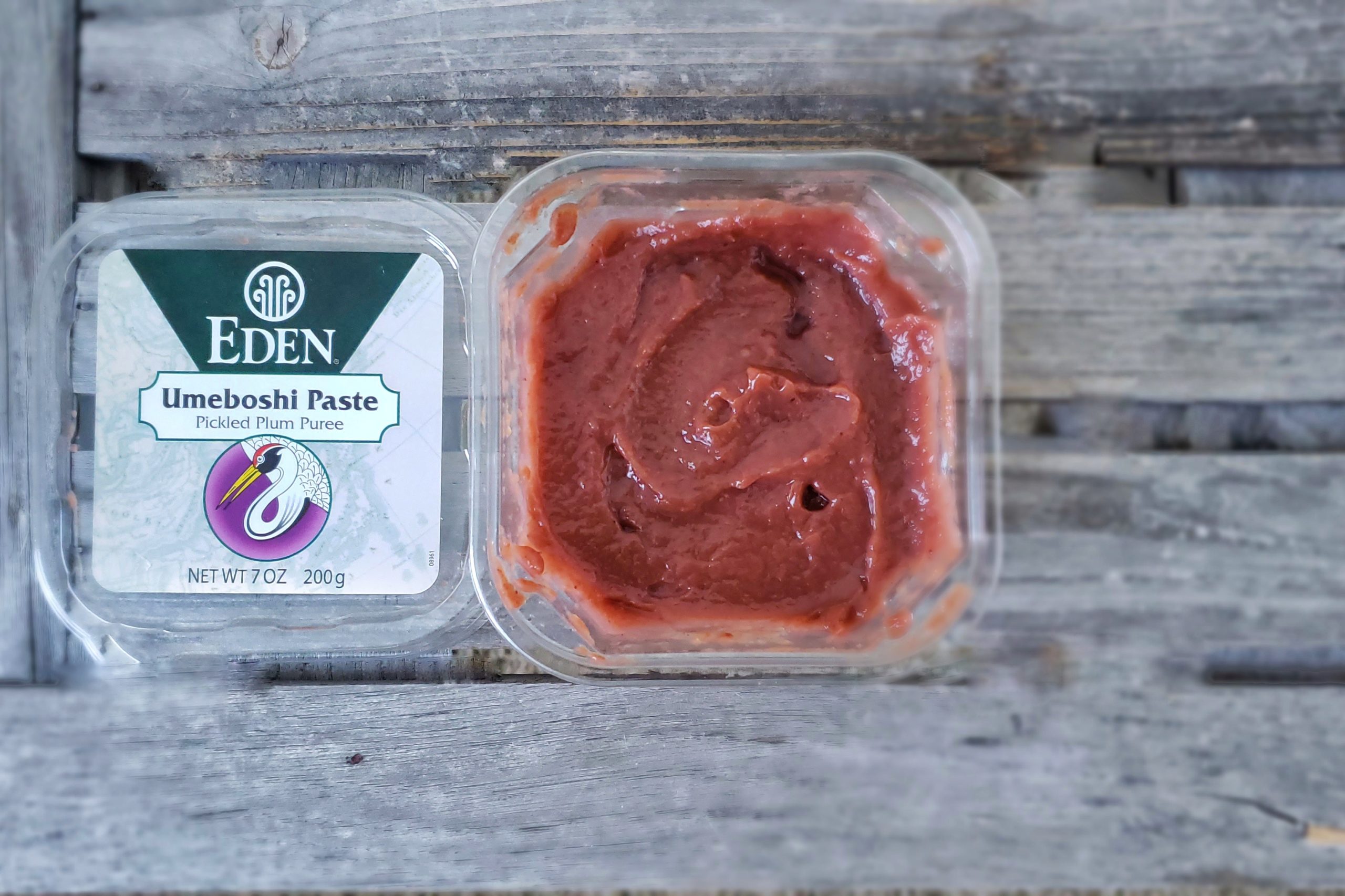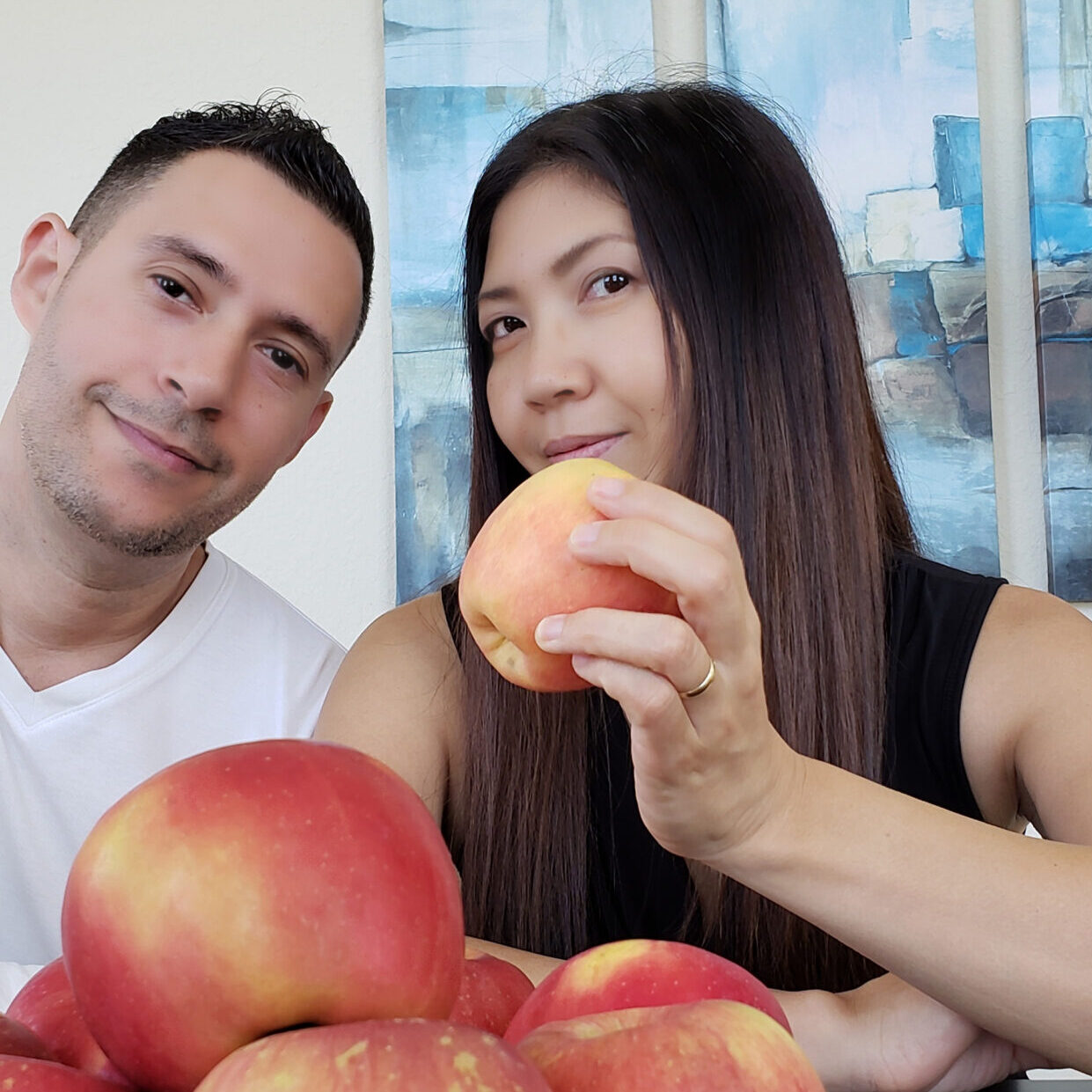Last Updated on June 3, 2023
Many authentic family-style Japanese dishes are not so complicated to make! This Daikon Radish Salad with Umeboshi Paste is super simple, easy, and quick to make. It’s vegan, gluten-free, with no added oil.
What is Umeboshi?
Umeboshi [梅干し] is pickled (brined) Japanese ume plum. It’s sour and salty although the level of sourness and saltiness varies. Umeboshi is one of the popular pickles to eat rice with. It’s super salty that a little bit goes a long way. Because of the sourness and saltiness, it’s ideal for using as “salad dressing” to replace any typical salad dressing. It’s a lot healthier too because umeboshi is oil-free!!
Typically, umeboshi is packed and sold as a whole with a seed in it. To make a paste, grab a couple and simply remove the seed then place them on a cutting board and chop them with a knife.

Luckily, here in the U.S., we can find umeboshi paste from Eden Foods and that’s what we use.
Daikon Radish
If you live in the U.S, the most common radish is the small red ones and daikon radish is typically available at Asian markets and some health conscious food stores like Whole Foods Market. The appearance of daikon radish is very much different from the Western varieties. It’s a long and white root with thick green stems with leaves attached.
In Japanese cooking, the root is used as both raw and cooked. Raw daikon radish is spicier than the red radish. It can be grated to make a condiment called Daikon-Oroshi [大根おろし] or sliced thinly to make a great salad which is exactly what we did for this recipe!
Daikon can be cooked in many different ways such as Nimono [煮物] or Oden [おでん] which are simmered dishes, just to name a few. But Japanese don’t just eat the root, they also use the leaves & stems. After peeling the root, the peel itself can be a main ingredients of a dish like Quick Sauteed Daikon Leaves & Peels! It’s one of a sustainable ingredients for sure.
The Flavor
This is pretty much a vegan version of a similar dish called “daikon radish with umeboshi paste with bonito flakes [大根の梅おかか和え].” To replace the bonito flakes, we use dulse flakes to give a hint of a “sea” flavor. It’s certainly not the same flavor as bonito flakes which has more smokey and fishy taste. It’s good to have and add an additional layer of taste in the dish!
How to Serve
We name the dish as “salad.” However, this can also be a quick pickle or simply a side dish or topping. It can be served immediately or let it rest (marinade) in the fridge for 15 minutes. In this way, the daikon really absorbs all the flavor from the umeboshi paste.
Although, it should stay fresh for 2-3 days, it doesn’t smell so good when you leave it in the fridge (or anywhere.) Any dishes using daikon radish, whether raw or cooked, they just leave a distinctive “radish smell” once you cut it. It’s not rotten at all but just not pleasant. So we’d recommend eating it asap 😆
Oh, don’t forget! Japanese food like this is always served with Japanese rice (starchy short grain rice)!!!
Feeling Inspired?
Check out our other popular dishes featuring daikon radish!
Sweet & Savory Daikon Radish & Leaves
Quick Sauteed Daikon Leaves & Peels
Daikon Radish Salad with Umeboshi Paste
Ingredients
- 9 oz daikon radish peeled & julienned
- 1/2 tbsp dulse flakes
- 1 1/2 tbsp umeboshi paste
- 1 tsp toasted sesame seeds
Instructions
- In a medium bowl, combine daikon radish, dulse flakes, umeboshi paste, and toasted sesame seeds together. Mix well.
- Serve immediately or marinate it in the fridge for 15 minutes.
Notes
- Umeboshi paste is typically very salty. Adjust the amount of it to your preference.
- This dish can be made ahead of time. Just let it marinate (rest) in the fridge. Consume within 2-3 days.
- It's best served with Japanese rice (starchy short grain rice.)







Wow, Divine,I Love umeboshi,I’ll try it this week
Great! Umeboshi hasn’t yet gained the popularity that it deserves. We hope your daughter loves it, too 🙂
Akiko and Peter